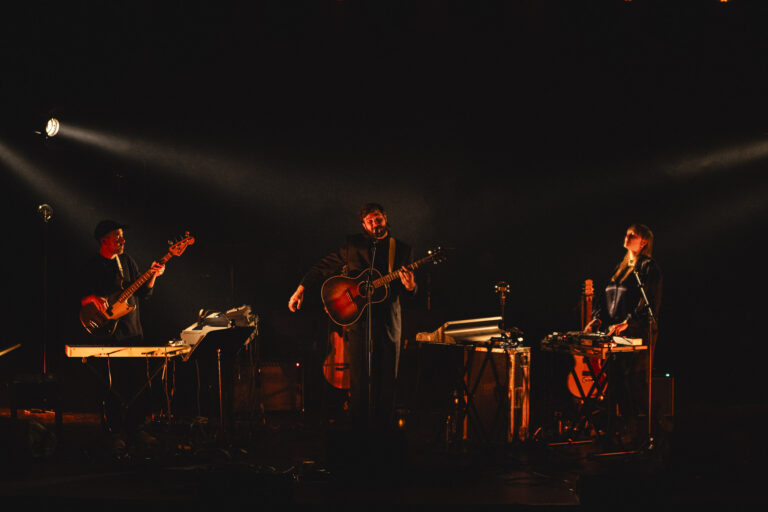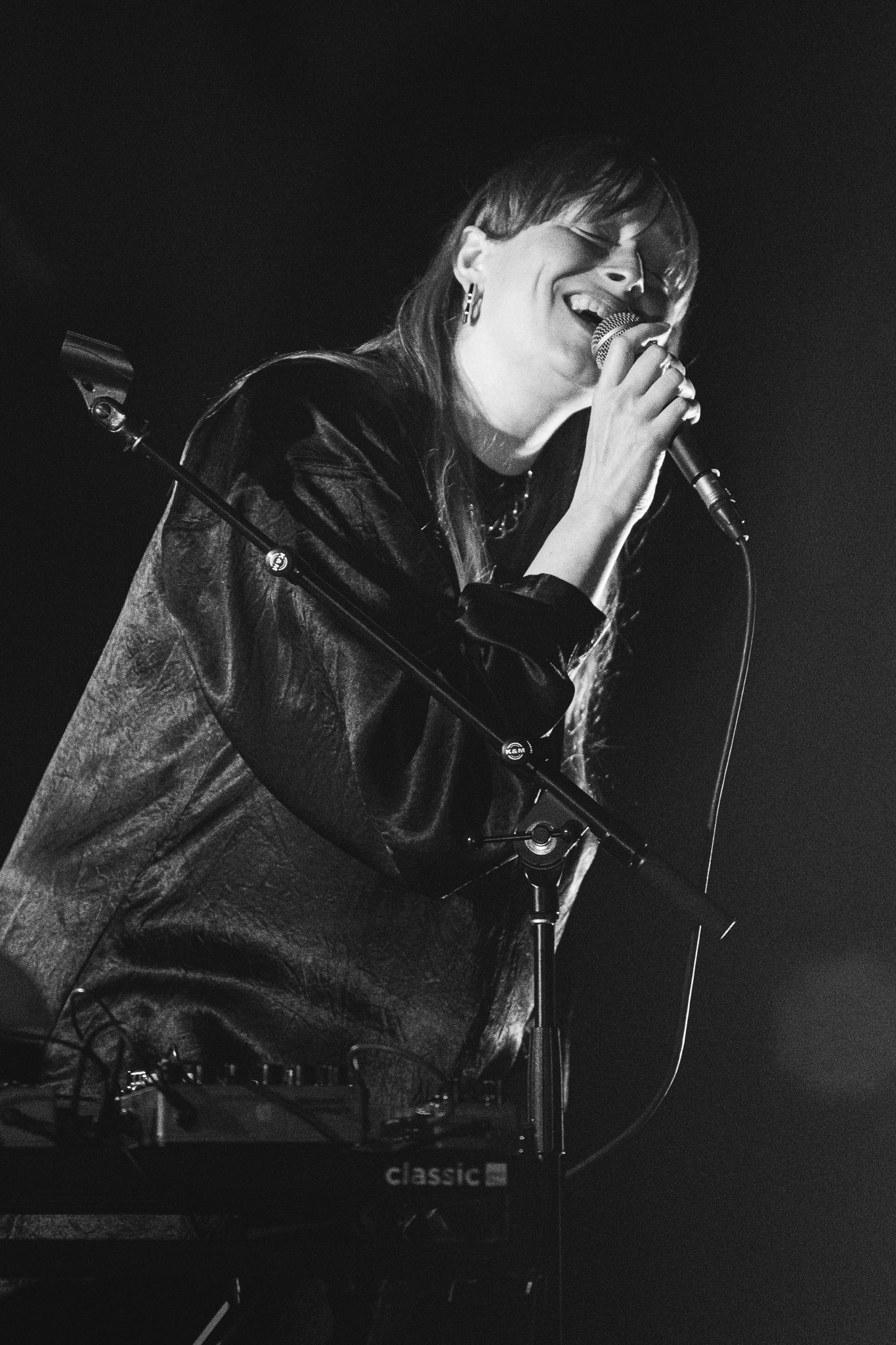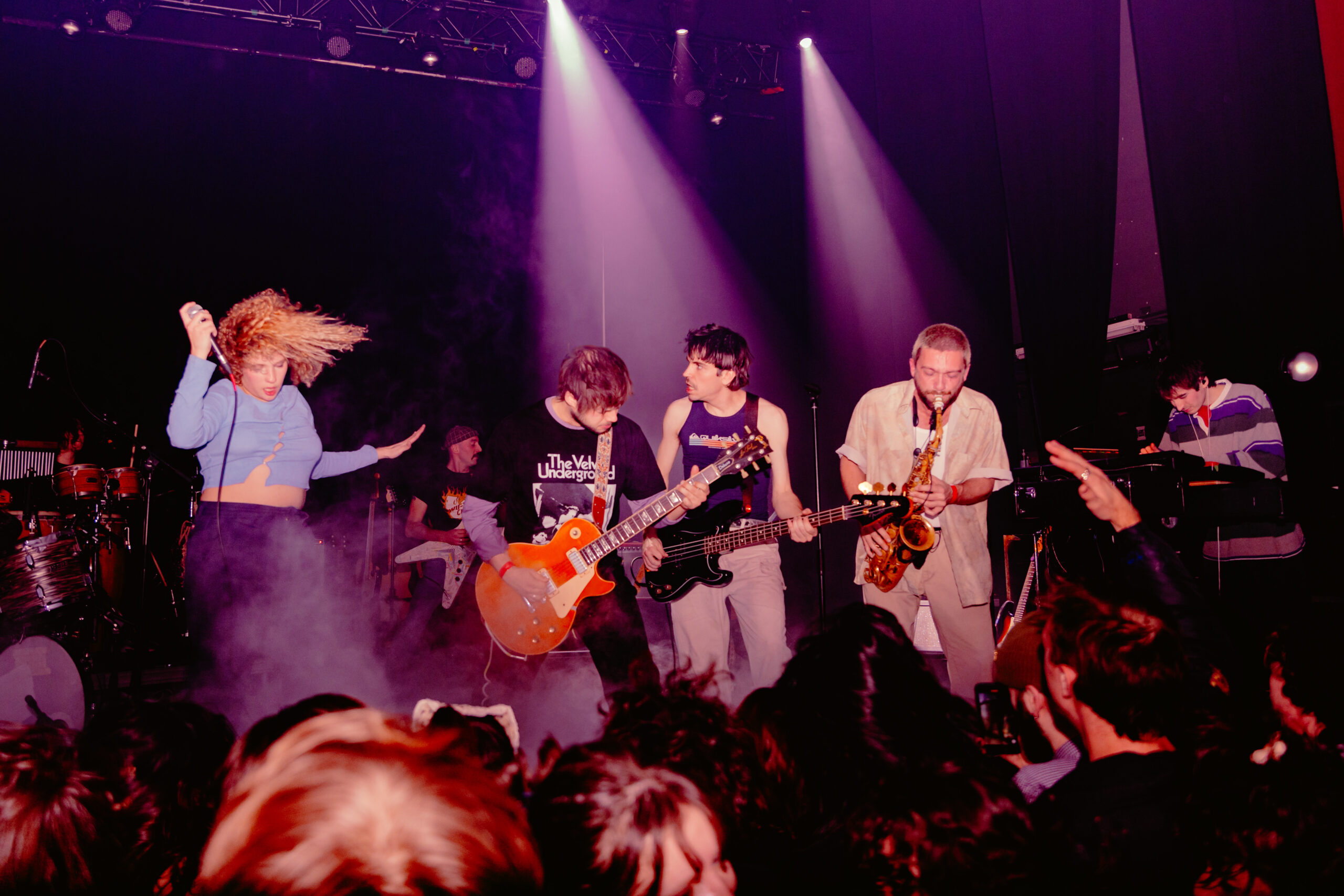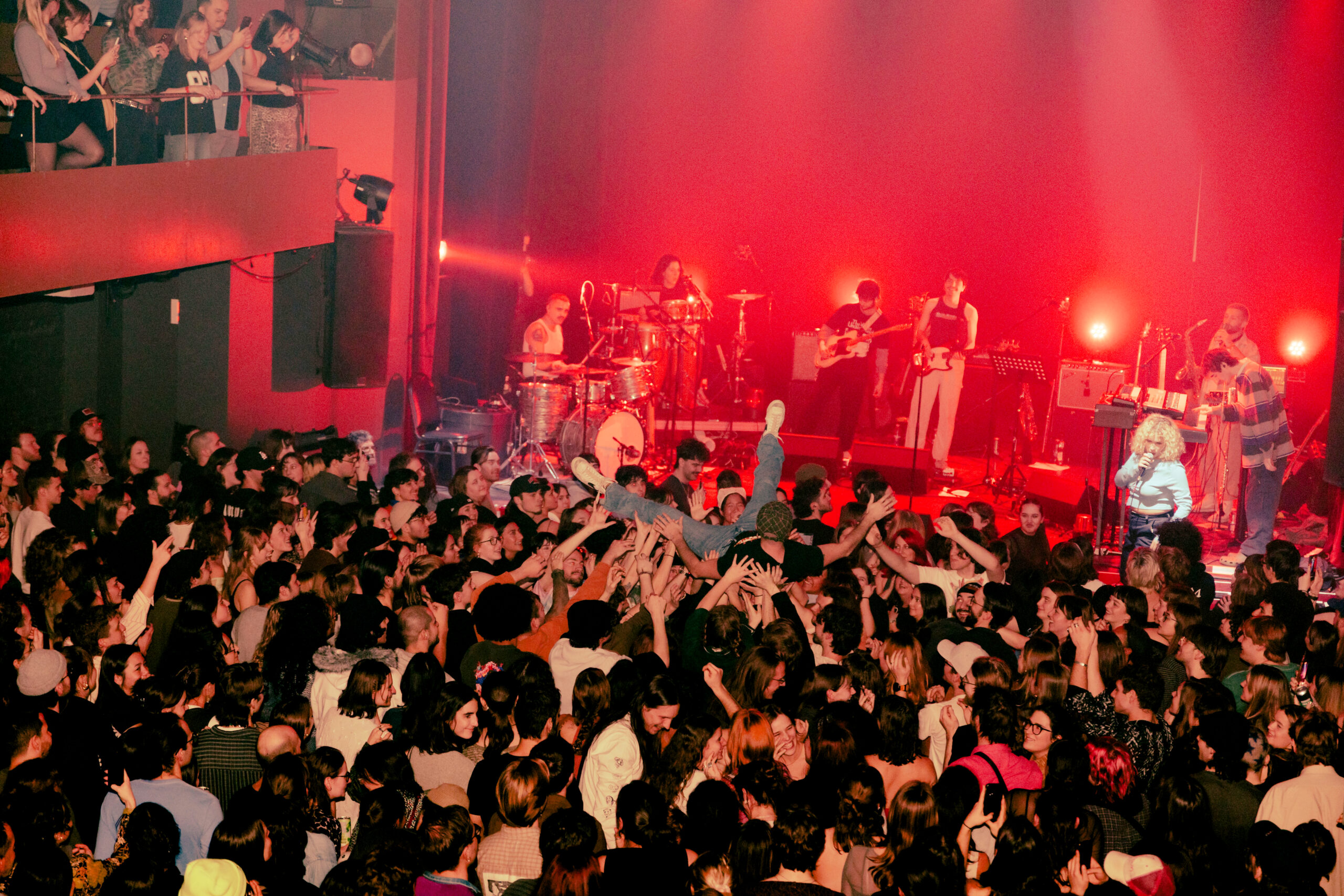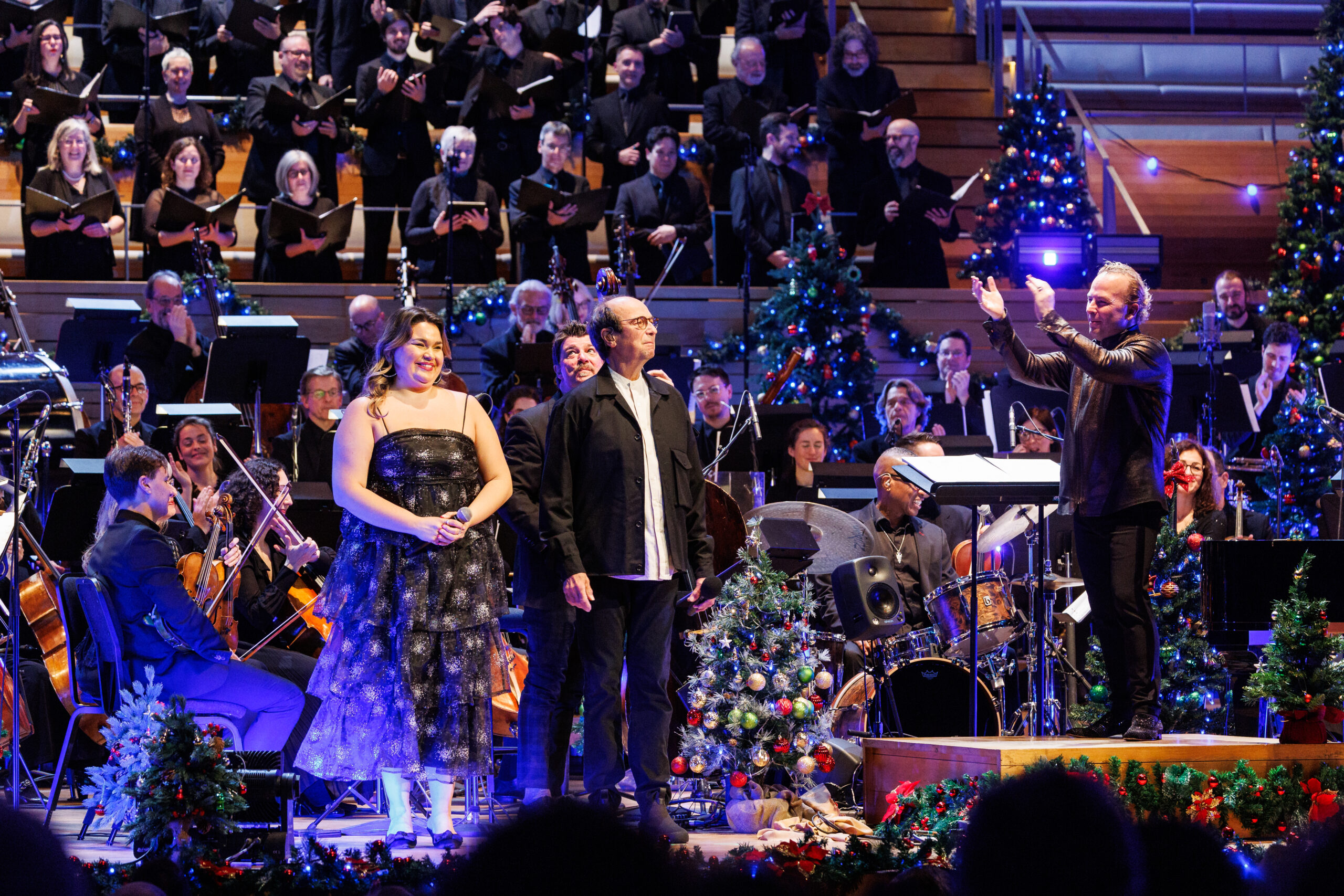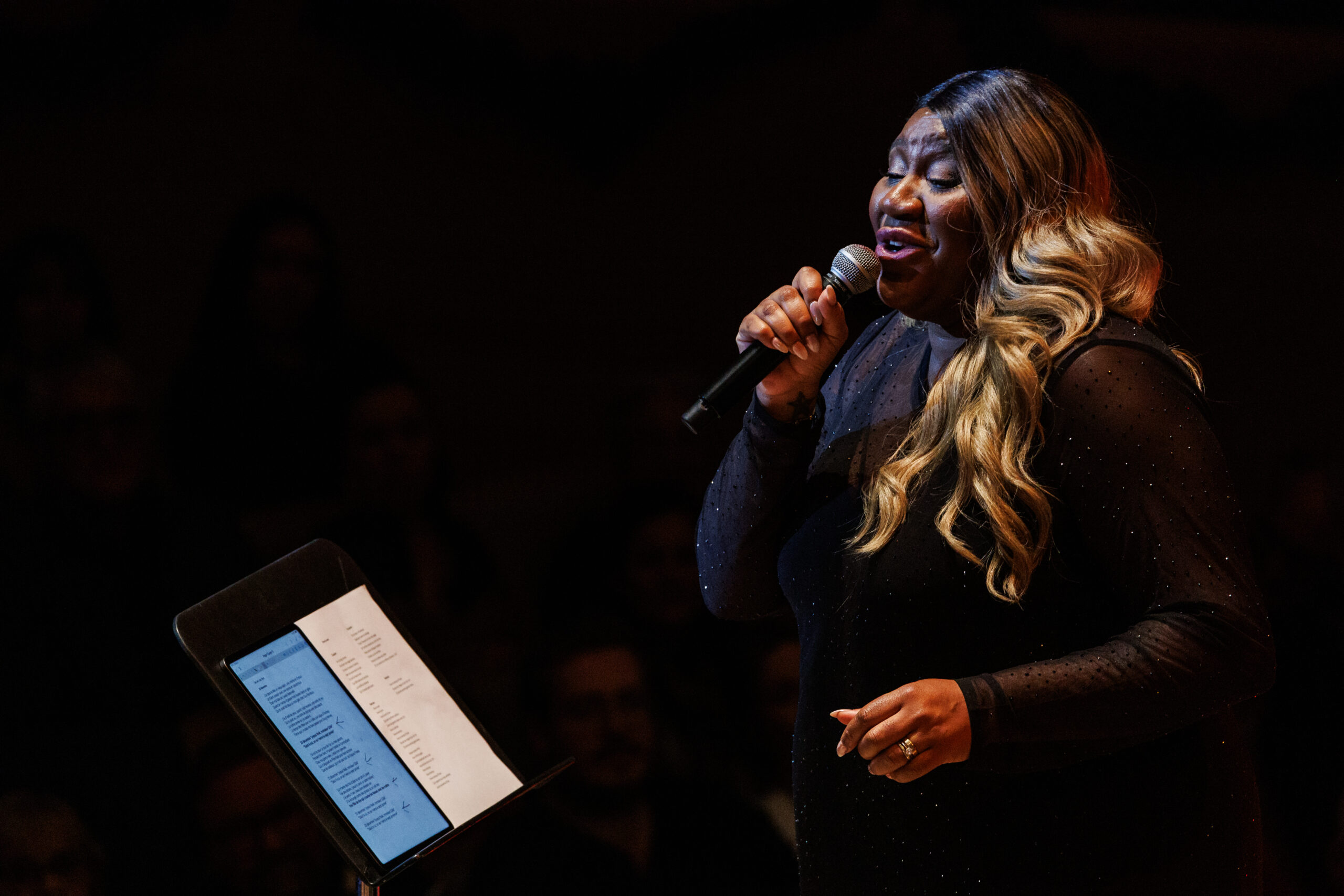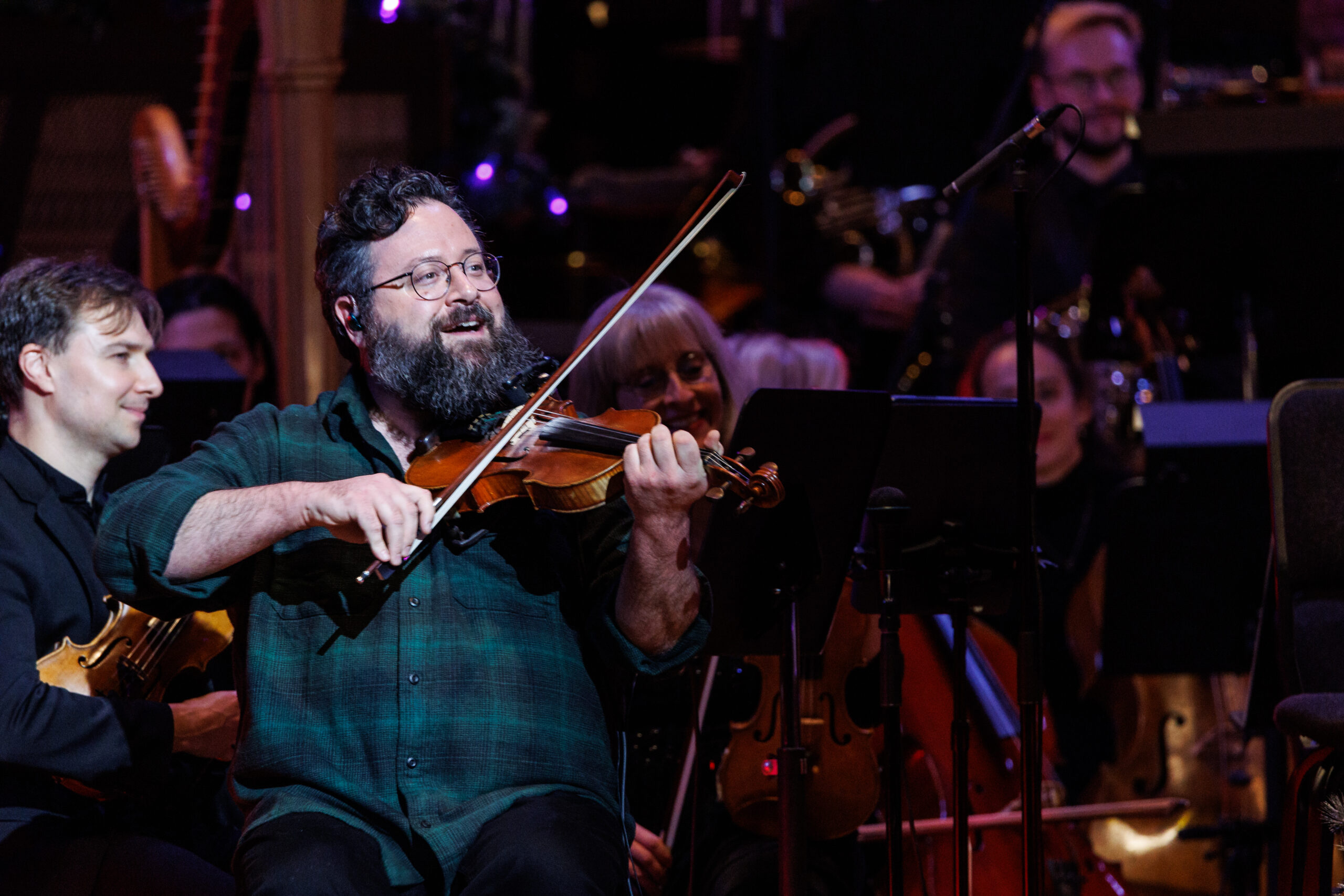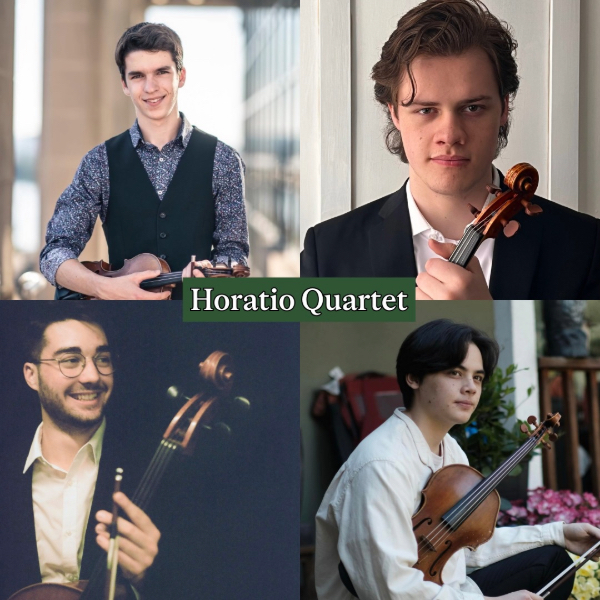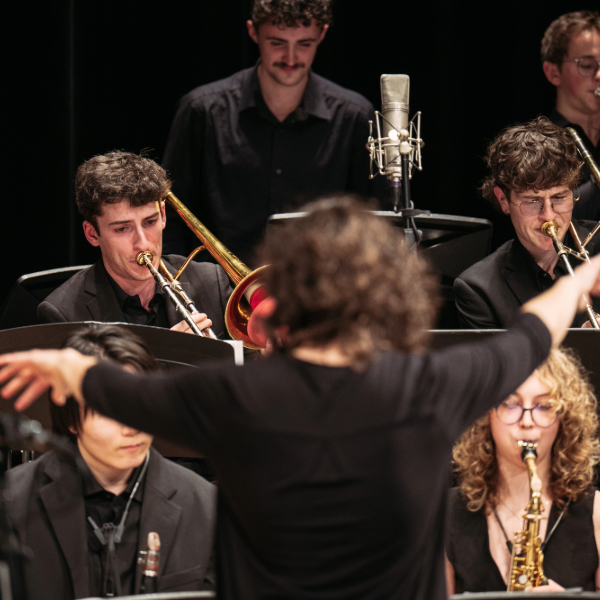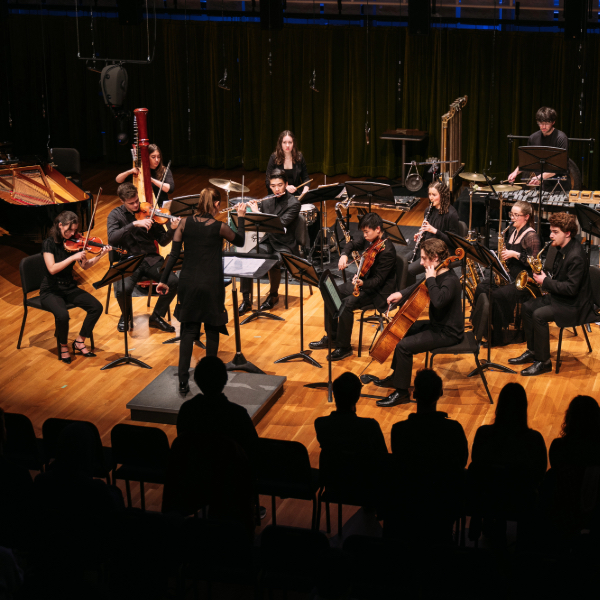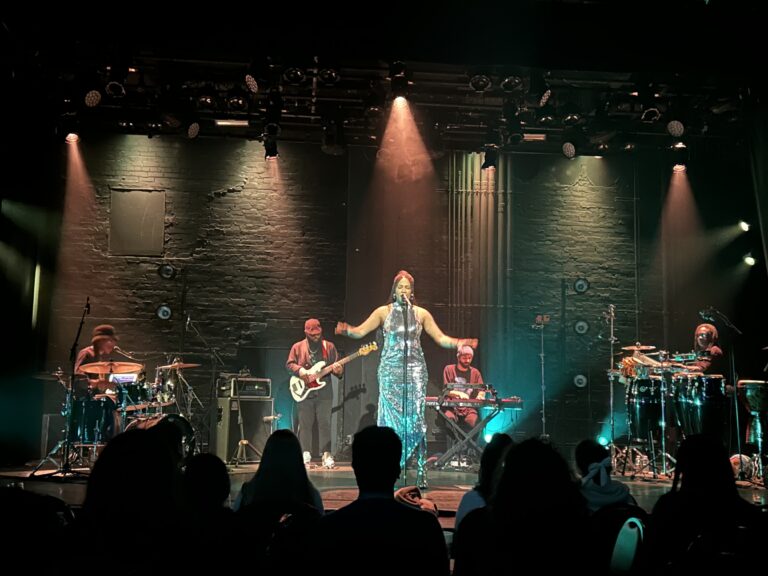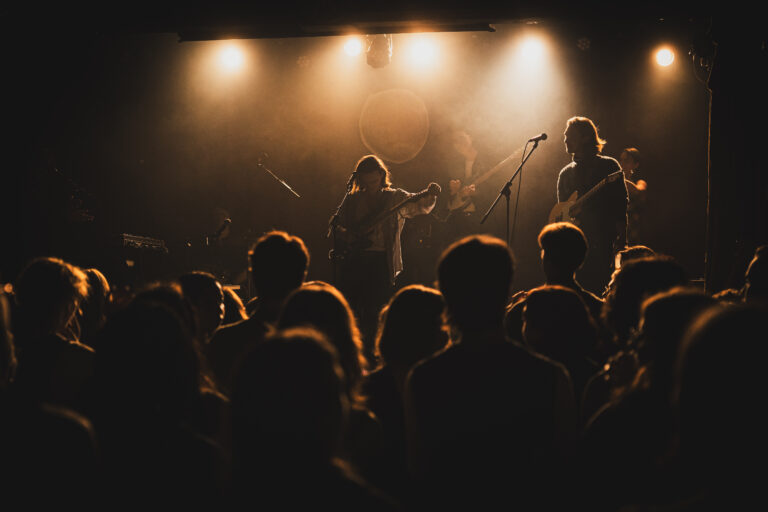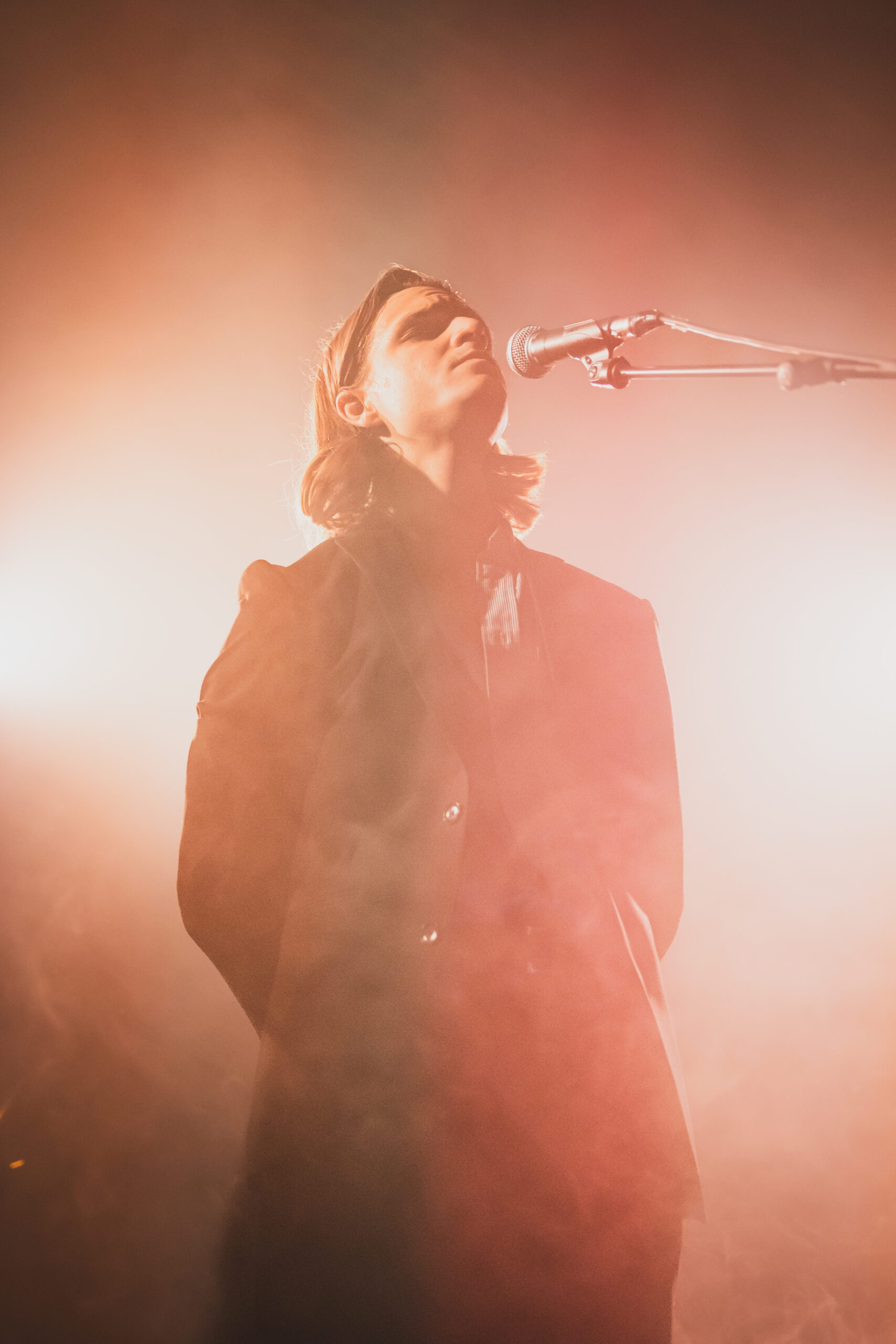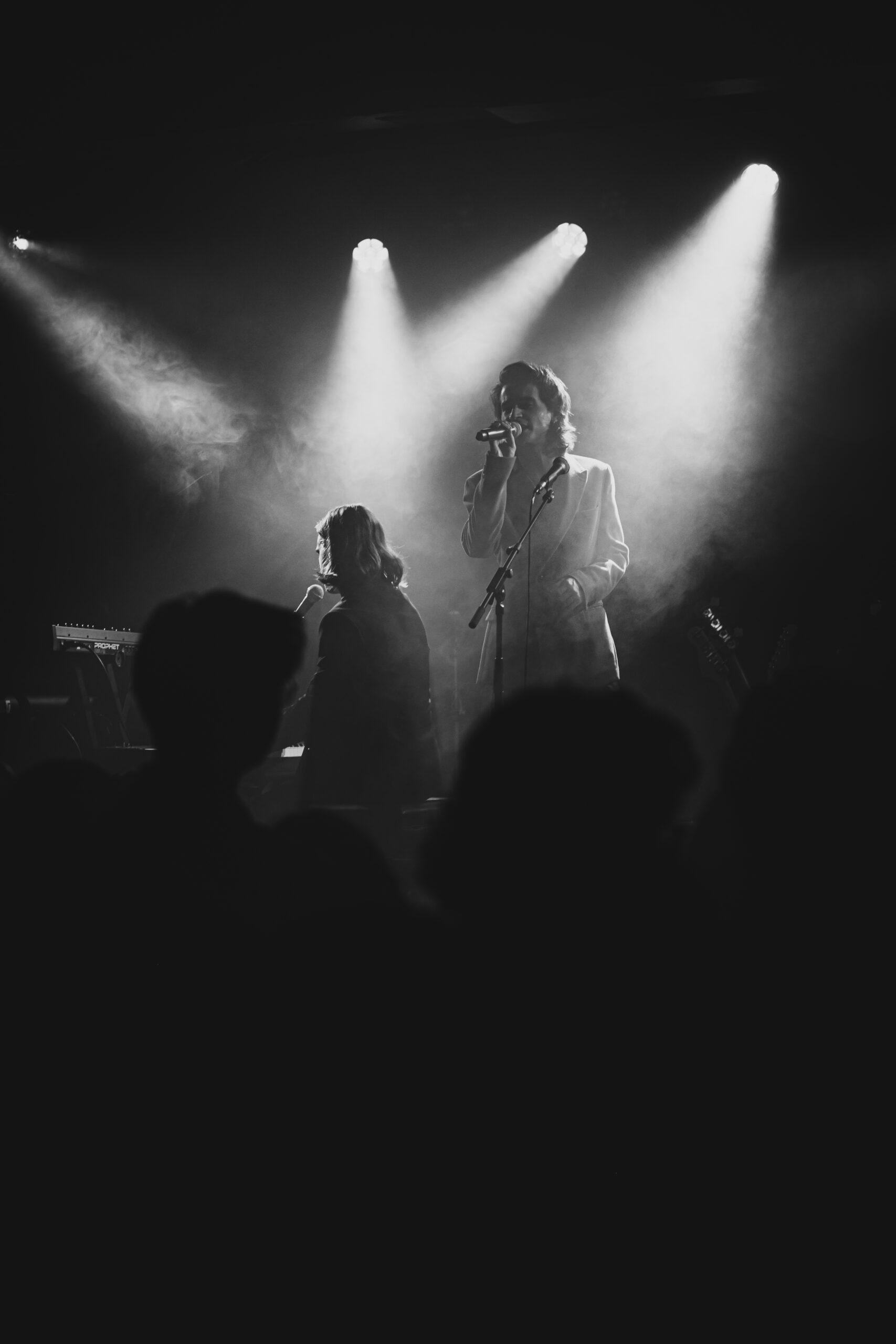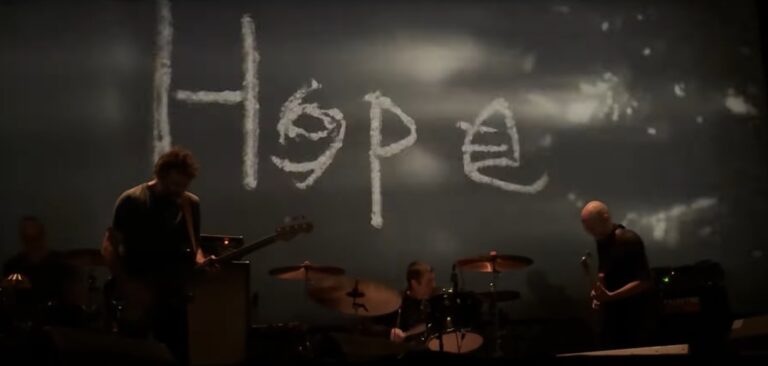On Sunday afternoon, the Arion baroque orchestra played to a full house at Salle Bourgie, presenting a program devoted to French, Swiss and German Noëls. The instrumentation included strings, harpsichord, theorbo and bassoon, and three soloists – on flute, oboe and hurdy-gurdy – enriched the concert with a succession of well-known and obscure Baroque Christmas tunes.
The concert opened with the excerpt “Où s’en vont ces gais bergers” from Michel-Richard Delalande’s Simphonie des Noëls, a familiar choice of tune that set a cheerful tone for the concert.
Mathieu Lussier then introduced the first soloist, Tobie Miller, a renowned virtuoso hurdy-gurdy player. As he announced her, it was instead flautist Vincent Lauzer who took to the stage, triggering open laughter from the audience. This light-hearted moment was followed by Michel Corrette’s Concerto No. 4 “Noëls suisses”, a piece for recorder and ensemble which, in a mixture of mischievousness and virtuosity, allowed Vincent Lauzer to shine with his expressiveness.
“It’s funny, it sounds like the recorder, the hurdy-gurdy,” announces Mathieu Lussier, referring to his shell. This time, Tobie Miller takes the stage in earnest to perform a work by Nicolas Chédeville, the Concerto “Les Plaisirs de la Saint-Martin”. This piece celebrates Saint-Martin’s Day, which used to bring celebrations almost as important as the feast of Saint-Nicolas. Although the work is by Chédeville, he would probably have copyright problems today, since he borrows much of his material from Vivaldi.
The third soloist, Daniel Lanthier on oboe, performed Bonaventure Gilles’ Concerto a 5 con oboe obligato. His lively, expressive playing made you want to be on stage with them. The energy of the soloist and the musicians was infectious, and the music seemed palpable.
Before intermission, the ensemble performed seven Christmas arias by Charpentier, bringing the first part of the concert to a close. Mathieu Lussier took the opportunity to invite the audience to slip an Arion record into their Christmas stockings this year. A suggestion that makes you want to opt for a Baroque soundtrack for this year’s festivities!

During the intermission, educational projections provided information on the tuning of Baroque instruments, the manufacture of period instruments and the repertoire presented. A great way to contextualize their artistic approach and enrich the audience’s experience.
On his return, Vincent Lauzer took the stage again with Michel Corrette’s Concerto No. 5 “Noël allemand”. The slow movement captivated with its delicacy, while the Allegro, with its rhythmic syncopations, added a playful touch.
Then it’s Tobie Miller’s turn to return to the stage. After telling us a little about the history of the hurdy-gurdy, she performs Nicolas Chédeville’s Concerto “L’Hiver”, a magnificent work, particularly for its Largo, which places the solo instrument in the open and allows us to hear all the subtleties of hurdy-gurdy playing.
Finally, the orchestra performed Les Saturnales by François Colin de Blamont, a little-played but much-appreciated composer. This piece, taken from the Symphonies des Fêtes grecques et romaines, perfectly recreated the festive atmosphere of these ancient celebrations, bringing the concert to its conclusion.
With a Christmas hat on the double bass scroll and on Mathieu Lussier’s head, the concert ended with a surprising encore: Minuit Chrétien. It’s not every day that an audience sings “Peuple debout” accompanied by a hurdy-gurdy!

